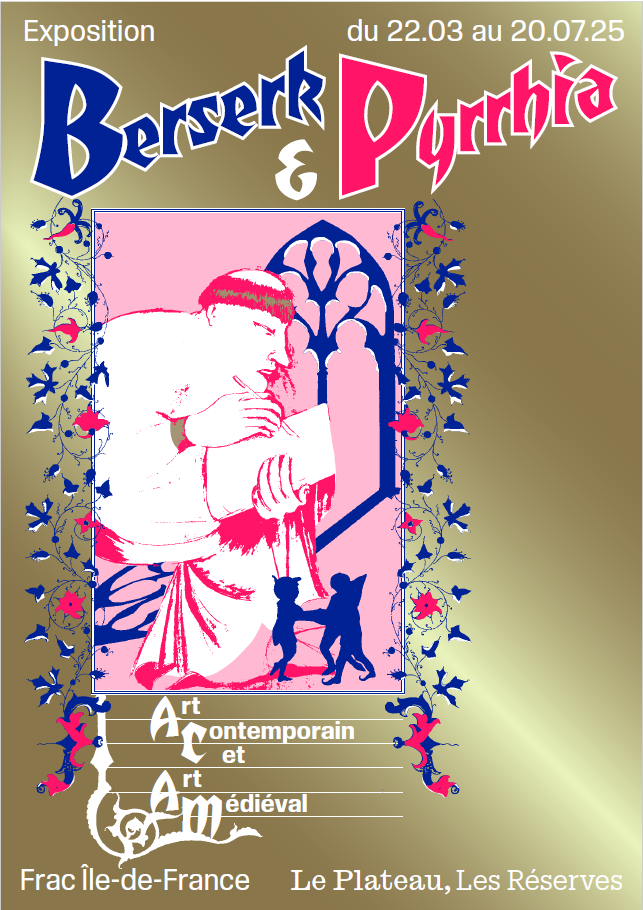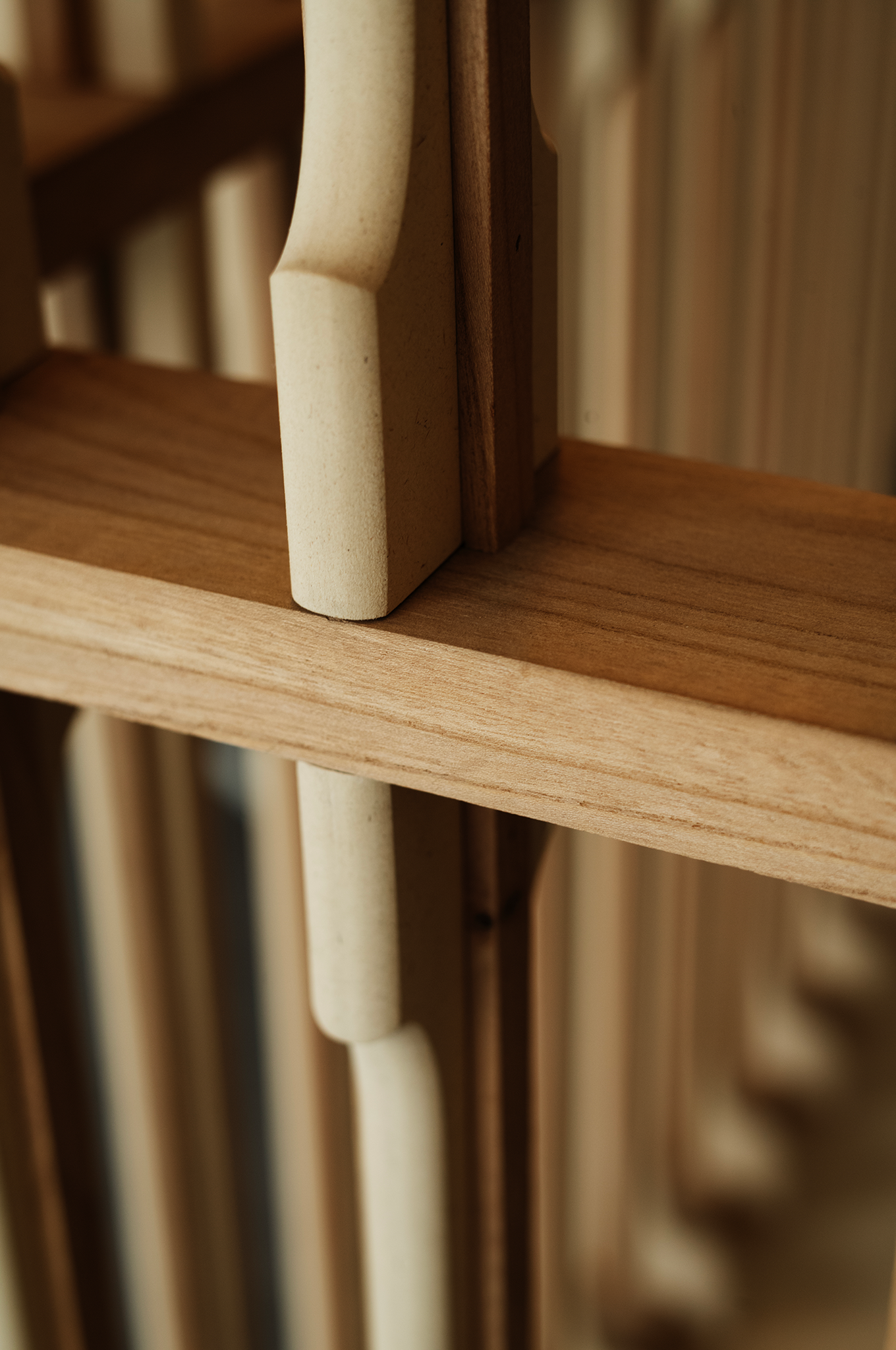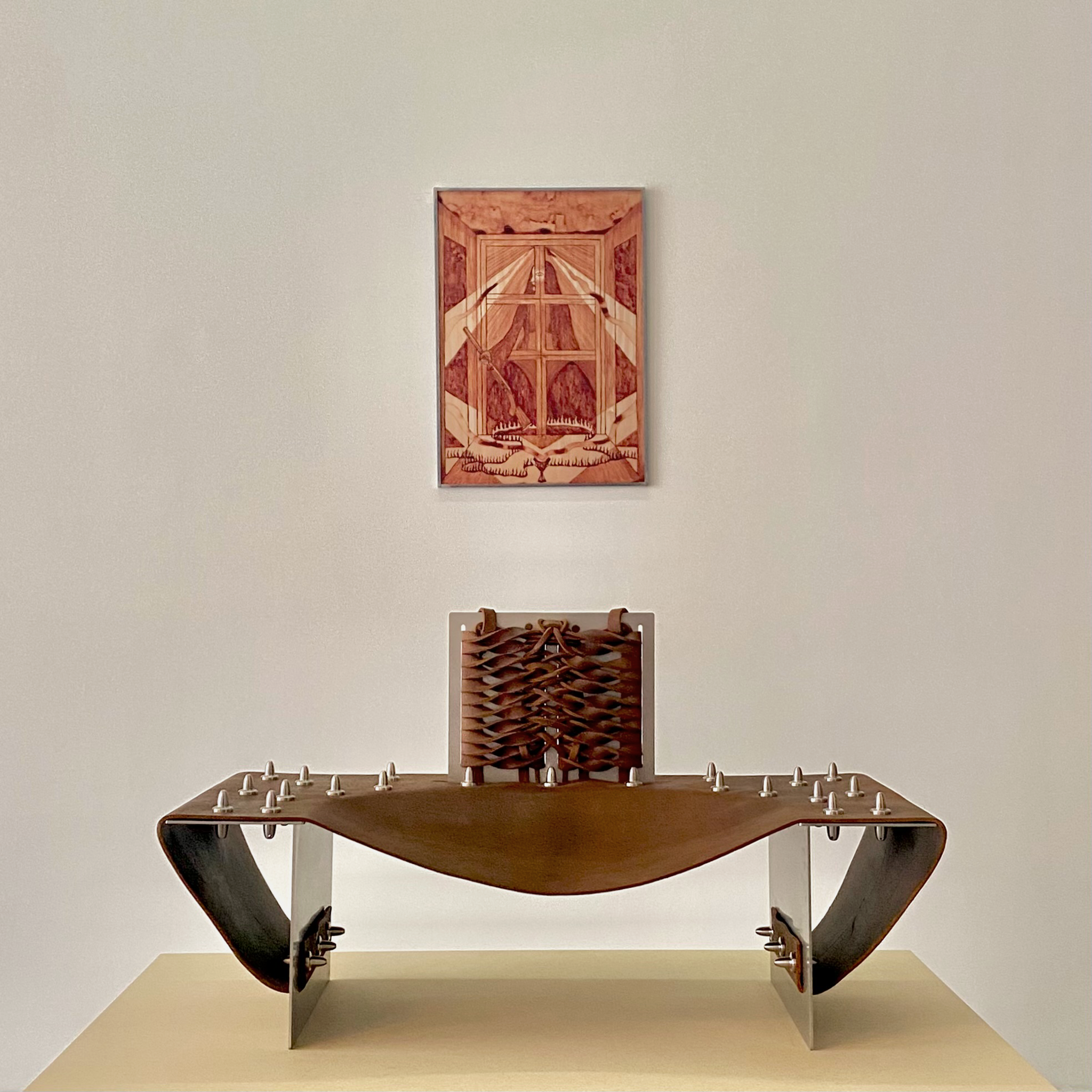
Scenography for the exhibition Berserk & Pyrrhia
DATE
22.03 – 20.07.25
SITE
Le Plateau, Paris
Les Réserves, Romainville
TEAM
Commissioner : Céline Poulin
Associate Commissioner : Camille Minh-Lan Gouin
Scientific Consultant : Michel Huynh, conservateur général, Musée de Cluny – Musée National du Moyen Âge
Exhibition produced in collaboration with the Musée de Cluny – Musée National du Moyen Âge Paris
The medieval heroic fantasy imagery of pop culture inhabits the worlds of today’s artists.
The exhibition Berserk & Pyrrhia makes visible the circulation of medieval images and their later appropriation, and brings together medieval and contemporary art. Medieval works are on display at Le Plateau and Les Réserves, thanks to loans from the rich collections in the Parisian region, creating an inter-generational and trans-historical dialogue.
At Le Plateau, in the spirit of Berserk, and with reference to the more mystical and romantic nineteenth-century interpretation of the medieval period, the works take us on a dark and brooding journey. At Les Réserves, they draw their references from the wonder and anthropomorphism of medieval bestiary, transporting us into the world of Pyrrhia, underscoring the importance of craftsmanship and community ties.
An exhibition produced in collaboration with the Musée de Cluny – Musée National du Moyen Âge.









